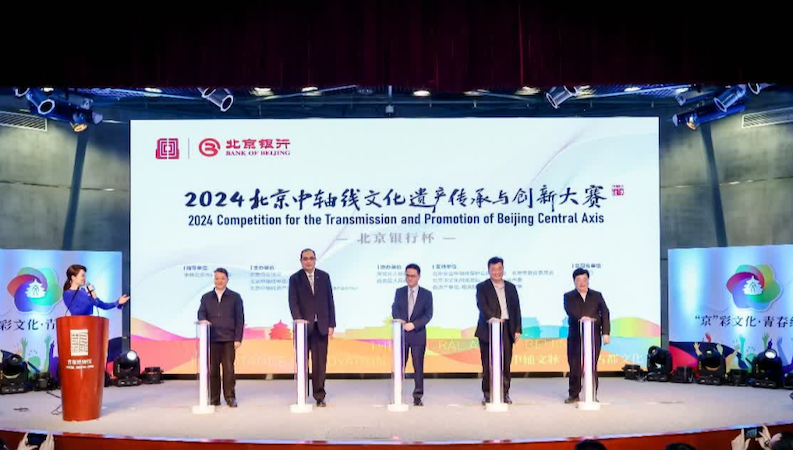Beijing Central Axis Extends Charm via Tourism Service Innovation
The Temple of Heaven, Qianmen Street and the Olympic Park, despite their own unique features, have one thing in common: they sit on or near the Beijing Central Axis.
Stretching 7.8 km from Yongding Gate in the south to the Bell and Drum Towers in the north, the Beijing Central Axis was constructed based on ancient architectural philosophy's ideal layout of a capital city. In July, it was listed by UNESCO as a World Heritage Site.
Already bucket list sites for many visitors to Beijing, a series of innovative products and services revolving around the architectural complex have emerged, earning the central axis a reputation as a cultural and tourism trend-setter.
The Beijing Central Axis made an impact at the 2024 China International Fair for Trade in Services, which concluded on Monday. Visitors to the exhibition halls had the opportunity to not only see the central axis, but also "walk into" it, "mail" it, "purchase" it, even "taste" it.
The local cultural heritage and park administrations presented various creative cultural products related to the central axis, including bookmarks, fridge magnets, mugs, coffee cups and canvas bags.
Dongcheng District, home to the majority of the central axis' core heritage sites, transformed its exhibition area into an immersive space dedicated to showcasing the heritage.
An electronic screen at the top of the district's exhibition area unfurled a scroll depicting the scenery along the route. A post office provided visitors with themed stamps and postcards. A time-honored restaurant showcased pastries shaped like iconic buildings along the central axis.
Meanwhile, some technology companies have brought the central axis to life with digital prowess.
Chinese tech giant Tencent, for instance, recreated the core heritage area of the central axis with a digital microcosm encompassing approximately 300,000 plants and 2.2 million buildings. Through a mobile mini-program, users can embark on an immersive exploration of the region, guided by virtual characters.
Merging traditional Chinese painting, historical scripts and integrated positioning algorithms, Beijing Gehua Design has developed a long digital scroll painting depicting ancient life around the central axis. By assuming a specific character, visitors have the opportunity to engage with traditional Chinese culture through interactive tasks within the painting.
"Through role-playing, one can not only enjoy the beautiful scenery, but also learn about culture and history. It's really fun!" said a visitor surnamed Liu.
Furthermore, the Beijing Central Axis has emerged as a catalyst for service consumption.
Data from Meituan, one of China's leading e-commerce platforms for services, showed that from January to August, the amount of money spent by visitors to Beijing via their platform increased by some 40 percent in some commercial areas located at the northern and southern ends of the central axis.
Exploring Beijing by riding along the central axis has emerged as a popular activity among locals and tourists alike. Meituan's data on shared bicycle usage revealed that searches for "central axis bike rides" surged by 80 percent since January 2024. Particularly during holidays, shared bicycles along the central axis are continuously in use from morning until night.
To showcase the cultural significance of the Beijing Central Axis and alleviate tourism pressure in the core area, the capital city is in the process of developing multiple cycling routes.
"There should be more ways for people to perceive and experience the central axis," said Yu Ping, a counsellor to the Beijing municipal government. "By doing so, we can inspire a greater sense of respect and encourage broader engagement in the preservation of the cultural heritage."




